Friends, Quanzhou’s cultural tourism is on the rise! Recently, Quanzhou has been absolutely bustling.
Every day, I’m watching online as the crowds surge in Xijie, Quanzhou— it seems like there’s a hundred million people! But if you ask me, Quanzhou is definitely worth it!


Quanzhou, a grand and beautiful city of the phoenix tree. If I were to introduce it, there are countless dazzling words to describe it.
It was once the starting point of the ancient Maritime Silk Road, known as the “First Port of the East,” and referred to by Marco Polo as the “City of Light.” It is a city filled with red walls and green shades in all four seasons.


Quanzhou was the port that merchants from all over the world aspired to reach. After its successful application for World Heritage status, it gradually became an ancient city that contemporary travelers long to visit.

Quanzhou is famous for its openness and inclusivity, with cultural monuments scattered throughout the city. As a place for the gods to communicate, it houses Kaiyuan Temple, which was built in the Tang Dynasty, China’s oldest existing Islamic mosque, Qingjing Mosque, the only existing Manichaean temple site in the world, and Tianhou Palace which worships the sea goddess Ma Zu, among others. Over 30 religious sects have left their marks here.
There’s a temple every three steps, and a Buddhist hall every five steps. The world’s religious museum is truly deserving of its name.
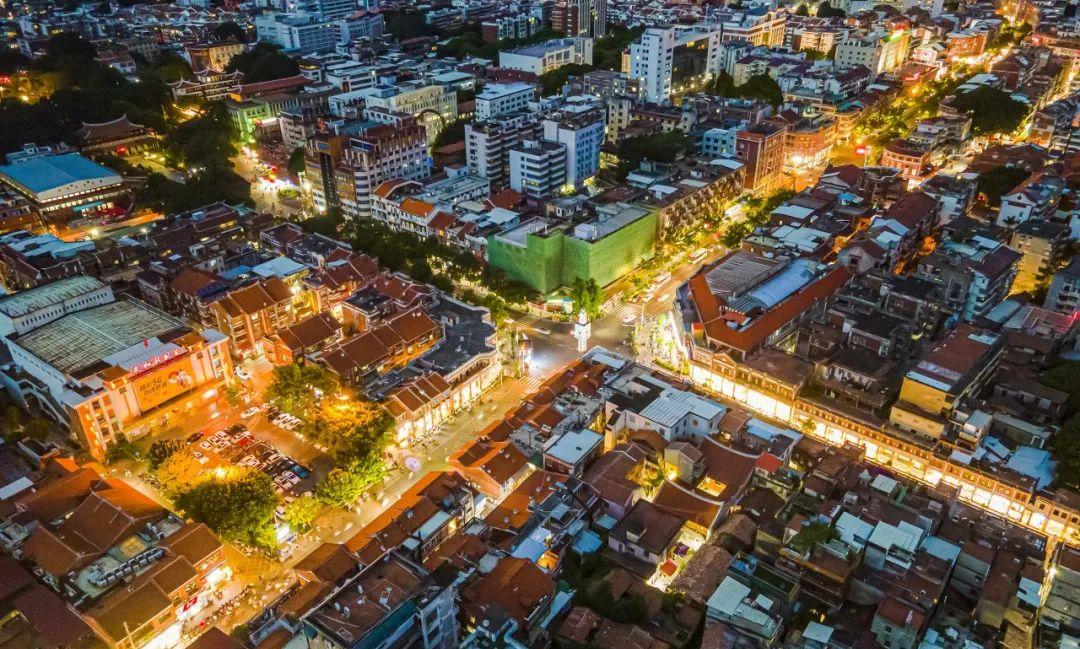

When the millennium-old cultural city coincides with the Spring Festival Lantern Festival, the festivities become even more grand. Quanzhou’s cultural tourism is putting in effort to create buzz, transforming the entire city into a massive Spring Festival-themed interactive event. There are lantern shows, street parades, intangible cultural heritage fish lantern shows… there’s no shortage of fun activities. Isn’t it a place where every day feels like a flower market, lit up as bright as day after dusk?
If you ask me about terms like “Drunken Ancient City Under Thousand Lights,” “Thousands of Families Dressed in Brocade” or “Half City of Fireworks, Half City of Fairies,” the real-life version is right here in Quanzhou.
If you’re planning to visit Quanzhou during the Lantern Festival, check out this guide!
There’s a lively environment in Quanzhou during the Lantern Festival!
If you happen to be in Quanzhou during the Lantern Festival period, you should pay special attention to these seasonal activities.
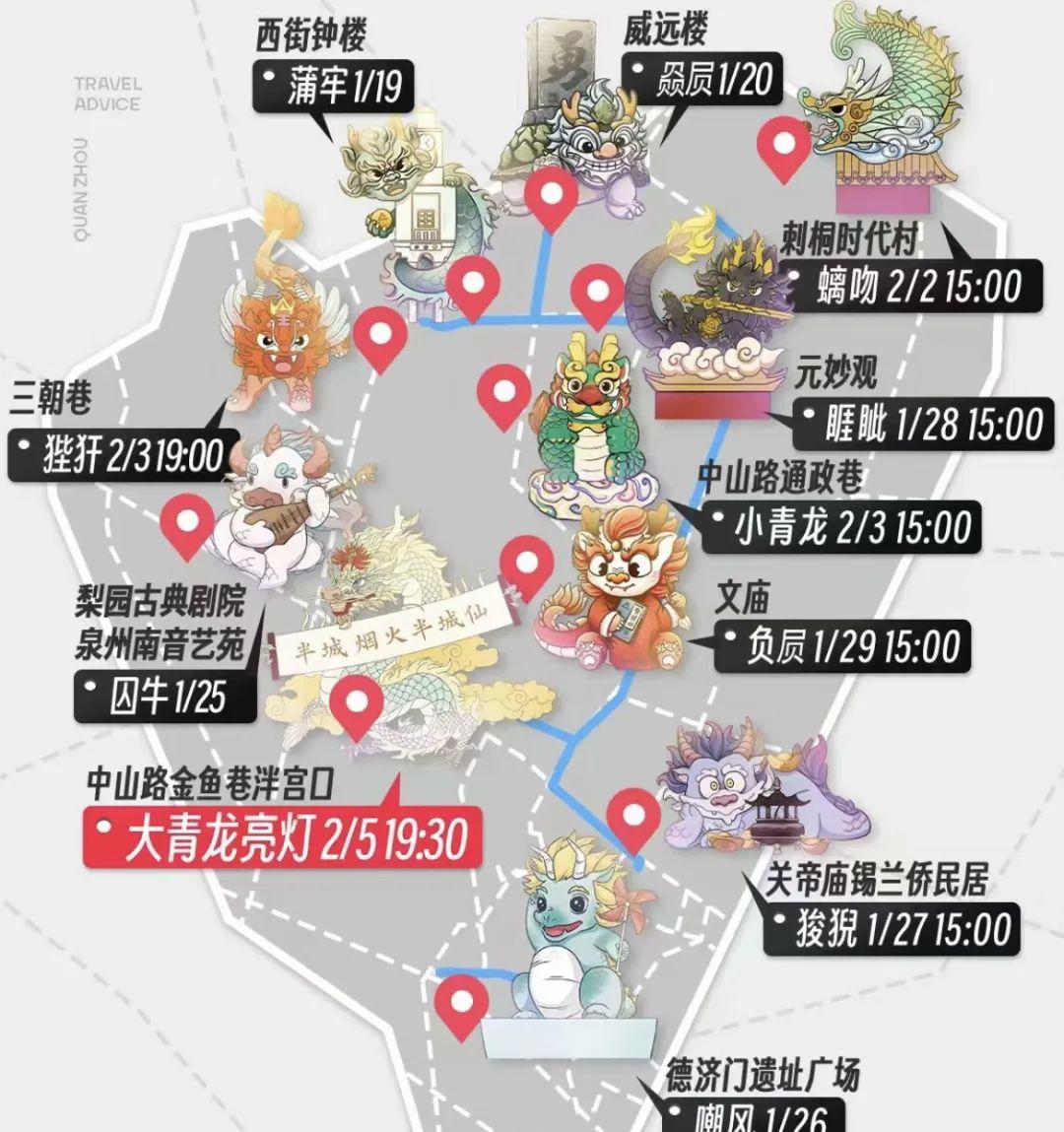
**Quanzhou Dragon Hunt**
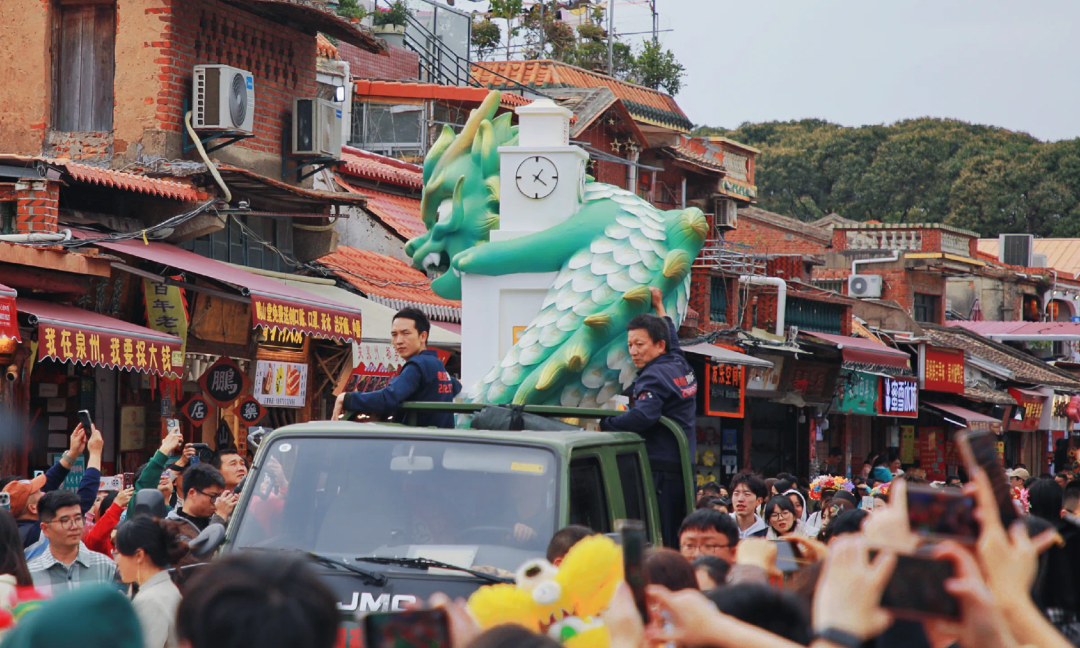
⏰ Event Time: February 10 to February 25, 2024 (Lunar New Year Day One to Fifteen)
2024 is the Year of the Dragon, and Quanzhou is making the most out of dragon elements. The “Ten Dragons and Nine Sons” artistic installation has recently become the hottest trend in Quanzhou. They’ve combined the legend of “The Dragon has Nine Sons,” creating 11 distinct dragon-themed art installations scattered throughout the city.
For instance, the dragon’s fourth son, “Pulau,” loves to circle above big bells. Just so happens that Quanzhou’s landmark is a bell tower, and this dragon is depicted circling from the ancient big bell to the modern bell tower.
So when you look at dragons in Quanzhou, you also get educated about dragon myths.
**Theme check-in points for “Dragons in World Heritage”** include:
Jiu Ri Mountain Prayer Stone Carving, Shibosi Site, Deji Gate Site, Tianhou Palace, Zhenwu Temple, Nanjing Imperial School Site, Quanzhou Prefecture Cultural Temple, Kaiyuan Temple, Lao Jun Rock Statues, Qingjing Mosque, Islamic Holy Tomb, Caoyuan Mani Light Buddha Statues, Cizao Kiln Site, Dehua Kiln Site, Anxi Qingyang Xiaocaopu Iron Smelting Site, Luoyang Bridge, Anping Bridge, Shunji Bridge Ruins, Jiangkou Dock, Shihu Dock, Liusheng Tower, Wanshou Tower.
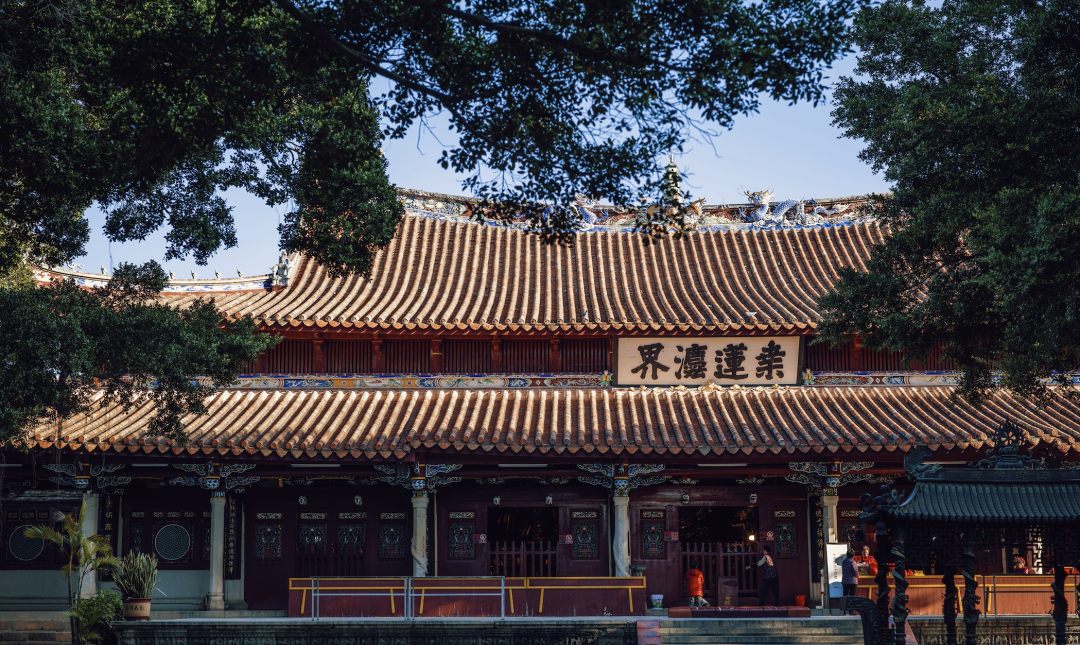
Quanzhou has also created dragon-year themed installations at these locations. They are 22 World Heritage sites in Quanzhou and must-visit spots during your trip.
Additionally, during the Spring Festival, Quanzhou will also arrange public explanations at some World Heritage sites:

⏰ Explanation time: February 10 – 17, 2024
🏠 Explanation points: Kaiyuan Temple, Prefectural Cultural Temple, Qingjing Mosque, Tianhou Palace (Deji Gate Site), Nanjing Imperial School Site Exhibition Hall.
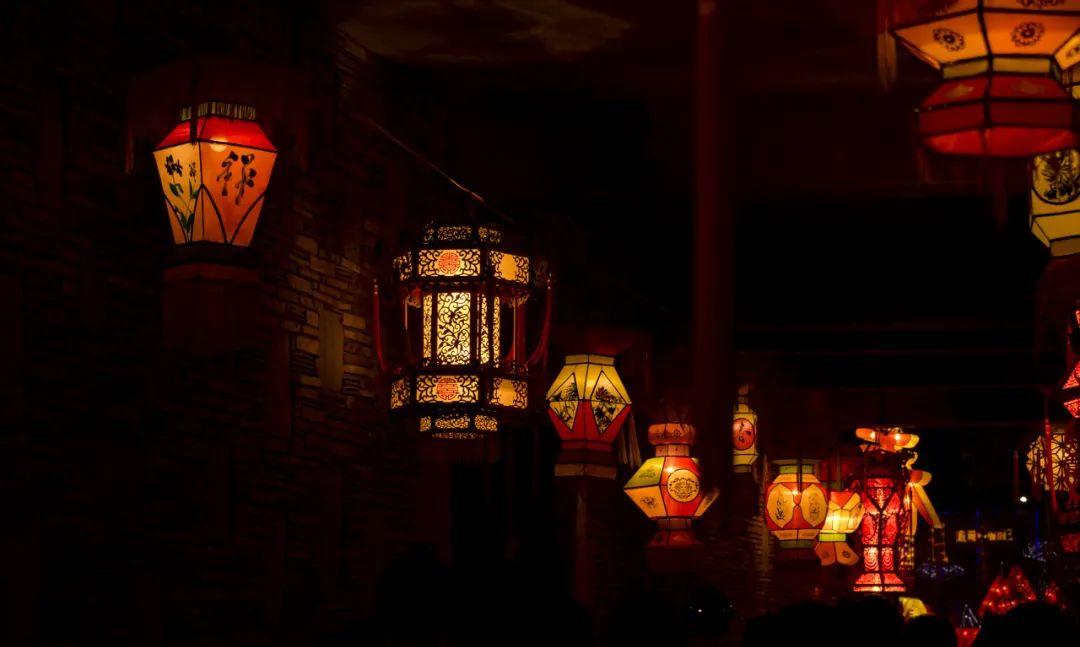
🎙️ Explanation sessions: Four daily sessions for Kaiyuan Temple, Prefectural Cultural Temple, and Tianhou Palace (Deji Gate Site). Six daily sessions for Qingjing Mosque and the Exhibition Hall of Nanjing Imperial School Site.
**Lantern Festival**
📍 Event Location: Ancient City Area, Fengze District, Taiwan Business District
Quanzhou lanterns are a typical representative of Southern lanterns and were included in the first batch of national intangible cultural heritage representative projects in 2006. During this year’s Lantern Festival, Quanzhou will display over 200 traditional lanterns for visitors to enjoy along both sides of the arcade from the clock tower to the section of Tujie on Zhongshan Road. Moreover, since this year is the Year of the Dragon, a nearly 20-meter-long giant national trend dragon lantern was specially set up at the entrance of Golden Fish Lane, and special designs of koi lanterns can also be found on Zhongshan Road.
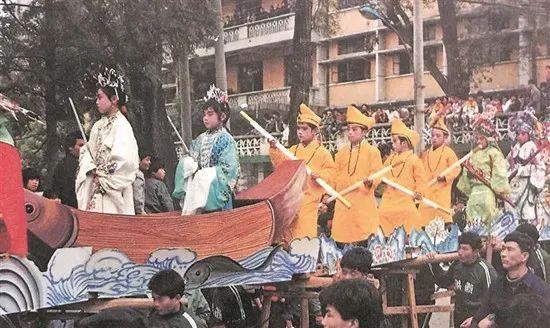
Additionally, there are large seated lanterns to be seen in various places like Weiyuan Tower, the square in front of the Prefectural Cultural Temple, Fangcaoyuan, Deji Gate ruins square, Shunjian Park, the Taiwan Business District lantern exhibition area, Yuanhe 1916 cultural street, Phoenix Era Village, and Mabu Fisherman’s Dock.
During the Lantern Festival in Quanzhou, it feels like every street and alley is bathed in a sea of colorful lights. Quanzhou, once known as the “City of Light,” is set to greet its magnificent night illuminations once again.

**Quanzhou Folk Parade**
⏰ Event Time: February 15 (Lunar New Year Day Six evening)
📍 Event Location: Concentration in front of the Prefectural Cultural Temple → Xinmen Street → Linzhangmen Parade
Quanzhou’s folk parade is also highly anticipated. This is Quanzhou’s first folk parade in 20 years, with 23 teams and over 500 performers participating.

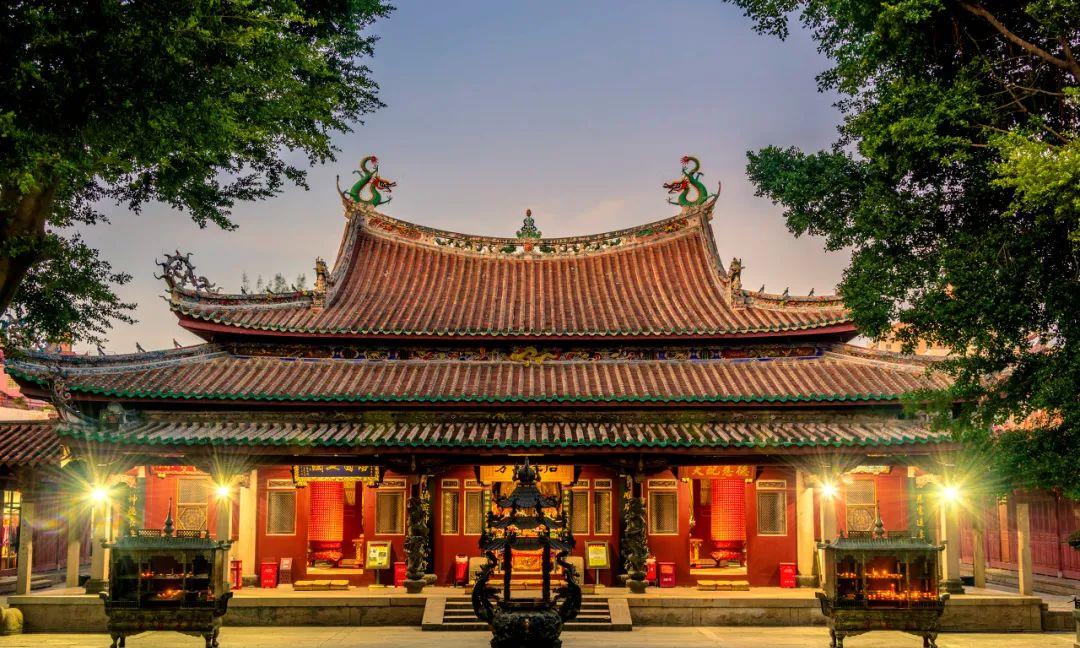
There will be a variety of performances, including a grand show, chest-beating dance, fire pit performance, Nanyin music, Shiyin, big drum music, big drum umbrella dance, soccer dance, big shake dance, and Southern Shaolin martial arts, totaling over 20 performances. I can already imagine the lively scene with crowds of people.
**Quanzhou Historical Photos**


The above are the events specially limited to the Spring Festival. Now, let me also highlight the regular attractions in Quanzhou.
As the starting point of the ancient Maritime Silk Road, the entire city of Quanzhou has been recognized as a World Heritage site. The many attractions here are not isolated; the various heritage points are scattered throughout the city and have integrated into the daily lives of the people of Quanzhou.
**Must-see Attractions in Quanzhou:**

Kaiyuan Temple: The oldest temple in Southern Fujian, and the most important among the temple complexes in Quanzhou. The twin pagodas inside are landmarks of the city and the tallest pair of Song Dynasty stone towers in China.
Tianhou Palace: Ma Zu is a very uniquely Chinese sea god, and this Tianhou Palace is one of the oldest and largest Ma Zu temples in China, renowned for its exquisite architecture.
Three Temples on Tumen Street: The Confucian Prefectural Cultural Temple, Guandi Temple (Taoism), and Qingjing Mosque (Islam) are three buildings representing different faiths, peacefully coexisting in a single street—a rare sight in the country.
**Jiu Ri Mountain Prayer Stone Carving:** The only official written record of a wind prayer ceremony in the world.
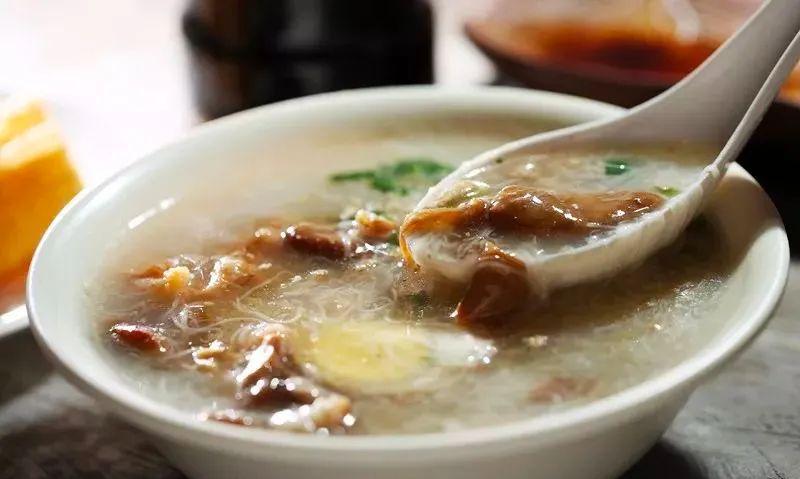
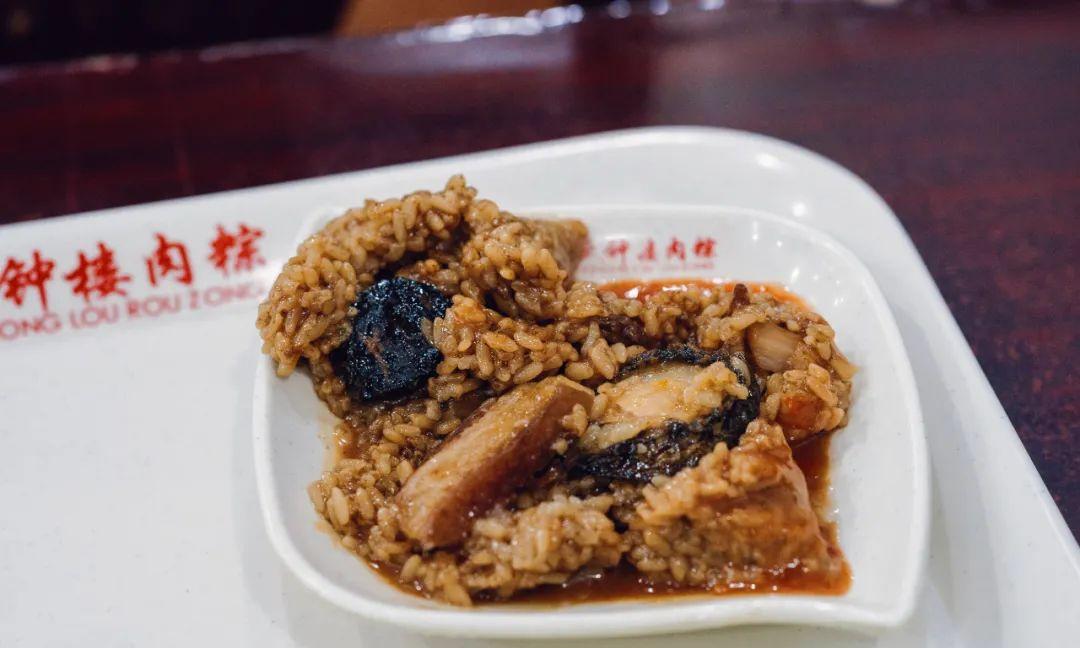
**Luoyang Bridge:** One of China’s four great ancient bridges and the first marine beam stone bridge in the country.
**Xunpu Folk Culture Village:** A small fishing village where houses are made of oyster shells, portraying a unique style. The flower pin area in Xunpu Fishing Village is quite popular, making it a must-experience photo spot for many when they come to Quanzhou. Here, you can frequently see people sporting “moving gardens” on their heads.
Of course, aside from these attractions, there are many ancient residences and constructions in Quanzhou’s old city area. Zhongshan Road is lined with colonnaded arcades, being the only and best-preserved row of arcade buildings in China. Additionally, the present-day streetscapes feature many traditional red-brick ancient houses which radiate a lovely ambiance for leisurely strolls throughout the city.
For more detailed guides on Quanzhou, check out these two links below:
A city rich in history and culture, it is the soul of Southern Fujian.
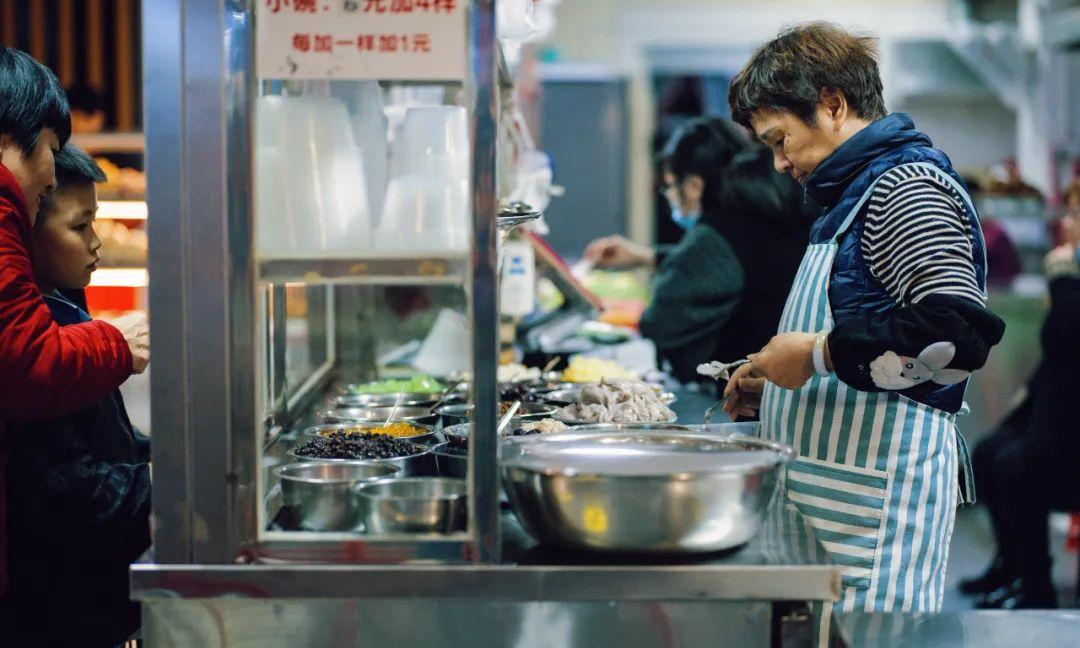

A place where I’ve dined 27 times in three days, and the stunning scenery can really captivate anyone!
**Must-try Quanzhou Delicacies**
Quanzhou’s culinary scene is truly abundant; we’ve previously written several guides, and I’ll highlight the classic dishes. They are mainly concentrated in the old city, making it easy to search for food.
**Mian Xian Hu:** The king of local breakfasts, its broth is made from seafood. Store Recommendations: Yuanqiao Mian Xian Hu, Shui Men Guo Zi Mian Xian Hu, Lao Ji Mian Xian Hu.
**Sha Cha Noodle:** The most captivating aspect is the rich sha cha soup base, with satay meat, fried tofu skin, and fish roe rolls as standard toppings. Store Recommendations: Mei Hao Sheng Sha Cha Mian, Xia Zhou Qin Zi Snacks, Jin Ji Sha Cha Mian (headquarters).
**Roasted Meat Zongzi:** Zongzi filled with an abundance of ingredients including mushrooms, taro pieces, chestnuts, luxurious seafood like abalone and scallops. Store Recommendations: Hou A Po Meat Zongzi Shop, Wan Ji Meat Zongzi Shop, Lan Shi Bell Tower Meat Zongzi.
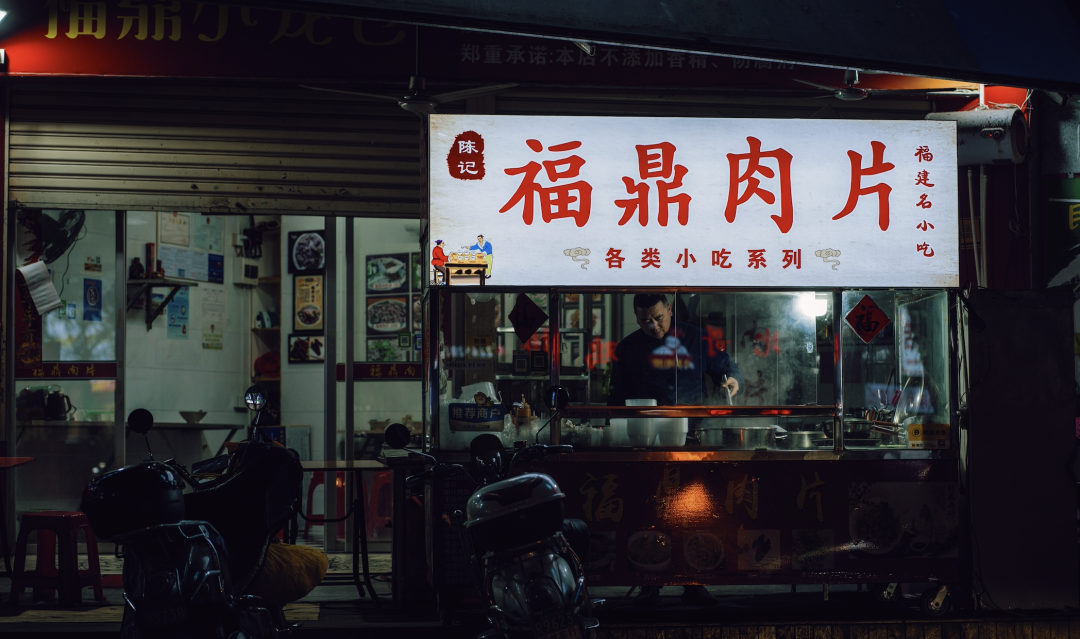
**Man Jian Cake:** The Southern Fujian style of dorayaki, crispy outside and soft inside. Store Recommendations: Kangzhuang Man Jian Cake Shop.
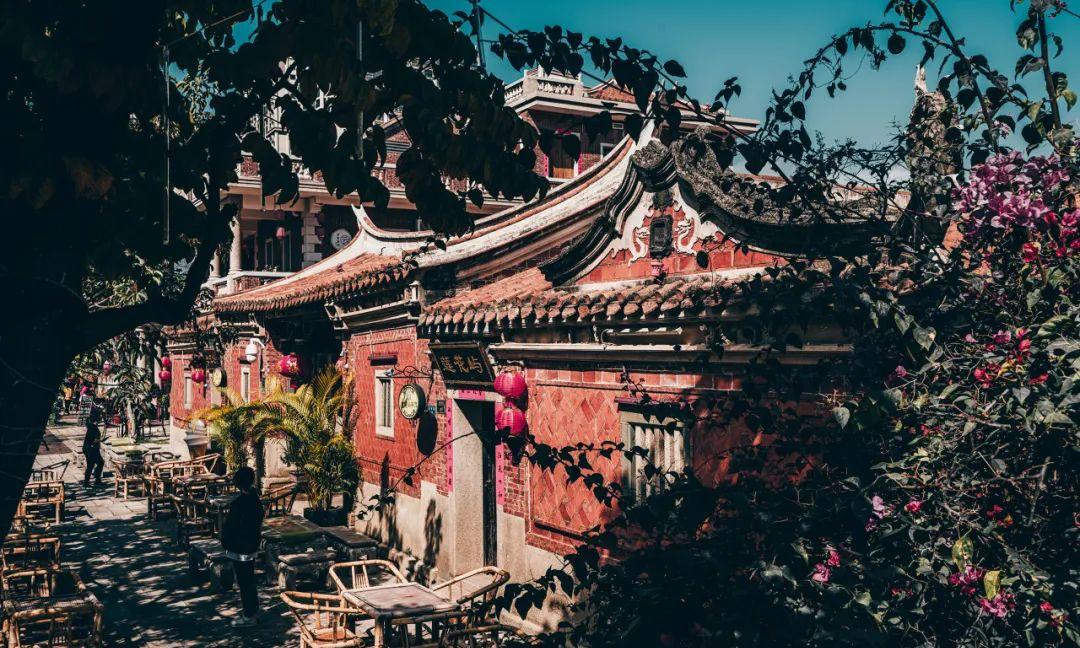
**Beef Steak:** A Chinese-style steak unique to Quanzhou, prepared ruggedly with large cuts of meat stewed until tender with spices. It is also a popular fast food in the area, found in many beef steak restaurants. Store Recommendations: Dongxing Beef Shop, Hao Cheng Cai Beef Restaurant, Ah Qiu Beef Steak.
**Ginger Duck:** Tender and sweet, mixed with a hint of spiciness from ginger slices, it is definitely a rice killer. Store Recommendations: Si Dan Ginger Duck, Zhong Ji Salt-Baked Ginger Duck.
**Shihua Gao:** Quanzhou residents’ sweet dessert, rich in ingredients, refreshing and cool, it feels heavenly to enjoy a bowl on a hot day. Store Recommendations: Bingzheng Hall, Ai A Shihua Gao.
**Yuanxiao:** The dessert for Quanzhou people, the filling is pounded out while the skin is rolled out, and the filling includes ground peanuts and sesame sprinkled with lard, becoming increasingly fragrant with each bite. Store Recommendations: Hai Si Jin Feng Yuanxiao Family, Bai Xue Yuanxiao Round.
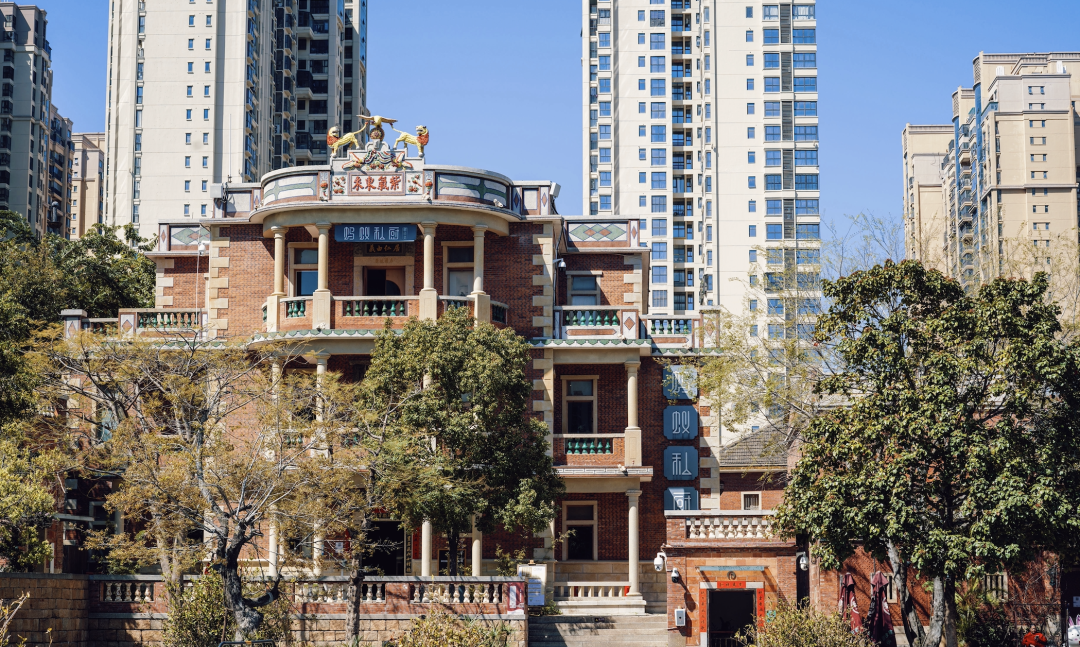

**Concentrated Food Spots:**
**Xijie:** A gathering place for snacks, Lao Ji Mian Xian Hu, Kangzhuang Man Jian Cake Shop, Yaforun Baozi, Fu Quan Zhenrun Baozi, Bai Xue Yuanxiao Round, and Chun Ge Teppanyaki are all located on Xijie, where Kaiyuan Temple is also situated.
**Golden Fish Lane:** A historical street rich in heritage in Quanzhou’s old city. Although the lane is short, it is known for its delicious food: Chicken Leg Yi, Tie Xia Barbecue, Donglai Caotou Sour, Hai Si Jin Feng and Ai A Shihua Gao can all be found here.
**Tianhou Palace:** Similarly, there is a great concentration of delicious food nearby, such as Bingzheng Hall, Lin Ji Zheng Quan Mao Green Bean Cake, Wan Ji Meat Zongzi Shop, and Wen A Small Restaurant, which are all well-known eats.
For a detailed food guide in Quanzhou, check out here:

I visited 27 restaurants in three days; Quanzhou rivals Shunde in my heart!
Every meal feels like a royal feast; how can Quanzhou be so delicious?
**Jinjiang**
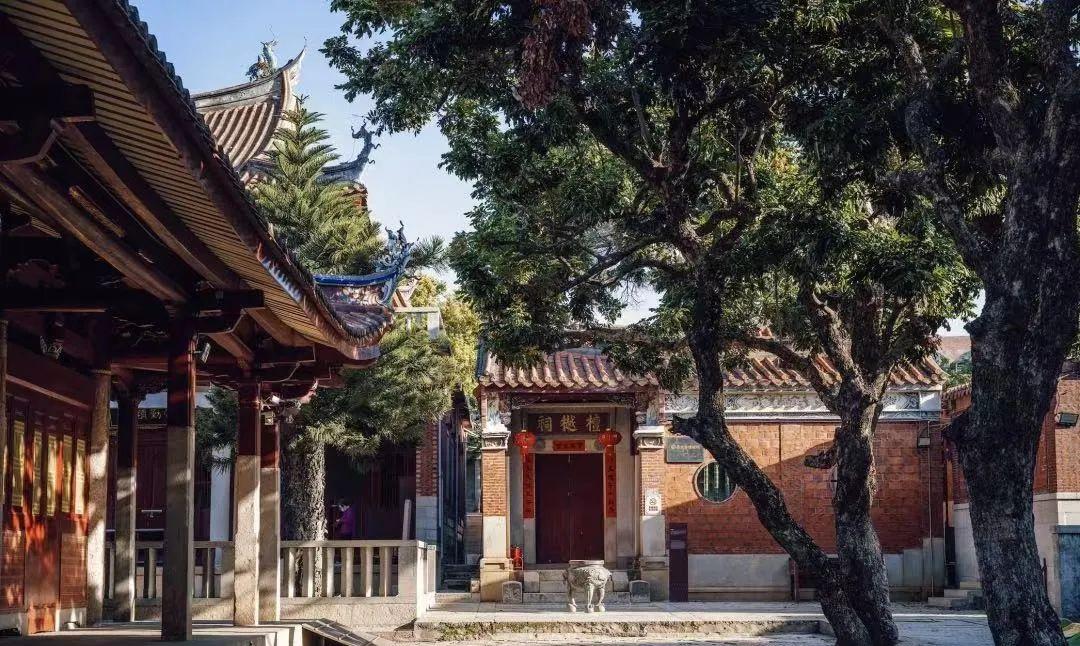
In addition to visiting Quanzhou ancient city, you can also take a day to explore the nearby Jinjiang. Within the application points for Quanzhou’s heritage, several are located in Jinjiang, making it worthwhile to visit them together for a complete experience. Moreover, with the opening of Quanzhou South Station, it has become even more convenient to travel to Jinjiang.
**Must-visit Attractions in Jinjiang:**


**Caoyan Temple:** Located at the foot of Huabiao Mountain in Jinjiang, it is the world’s only complete Manichaean site.
**Wudian City Traditional District:** Like Quanzhou’s old city, it has a lot of ancient buildings, with more than 100 historical and architectural styles that are both fun to explore and photograph.
**Wulin Traditional Village:** Well-preserved traditional Southern Fujian architecture, but smaller and less frequented than Wudian City, which also houses the Qingpu Cultural Lodge.
**Anping Bridge:** Built during the Southern Song Dynasty, it is the longest existing marine stone bridge in China.

